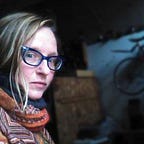The Collector’s Urge
A quick reaction to the NFT craze
Everyone has imaginary friends and the NFT craze is an example of that truth. As a child those imaginary friends probably looked a lot like a stuffed toy or some prettier version of yourself. As a teen and adult that imaginary friend was probably more abstract. The sound of a voice singing a song you know, the characters of your favorite book or show were always somehow there to offer comfort. Through happenstance or on demand you tuned the old radio or pulled out the tape or the disk that provided a reliable sense of comfort. This is exactly the reason why NFTs exist, not just in their high-priced forms but in the pennies-for-a-picture versions.
NFTs are another form of human adaptation in an emerging environment. As the physical world around us destabilizes the NFT is a token of security, a totem of comfort. The NFT is assurance; an ability to store a song, a gesture, a magnificent something that touches us and to keep it close. In a world where we stream just about everything we can feel the media slip through our control. NFT’s are a way of arresting the slip sliding feeling of instability, the one that the current models of media distribution enact. The NFT is a next generation ownership model that provides relief from the streaming that relegate us into being constant renters, constant culture-beggars of sorts.
The NFT world is complex to say the least but it provides for a few key emotional ties that humans need to bind for our sanity’s sake. Individual and collective continuity can not be assured through the massive banks of centralized culture.
The NFT is an adaptation from the baby 1.0 version of the web to the 3 dimensional one that is barely visible to the naked and observant eye. Yet this world is all around us and in it personal mobility and sustainability form an important key to our emotional adaptation. Imagine a world where you’re suddenly fleeing a fire. Imagine another where a war has pushed you into a borderline existence. Imagine whatever headline in the news coming home to your fingers, your mind, your skin and your days. Imagine that world now and compare it to the statistics. The NFT is a way of keeping the things we rely on for strength and comfort at hand. It’s a shorthand way of producing novelty and a simultaneous catalog we call an archive. Any academic will tell you both of these are necessary for culture to make any sense, for stories to continue from one cultural operating system to the next.
Right now there is a frenzy around the non-fungible token. There is a rightful cry resounding around the fossil fuel consumption and the money laundering, around all the dystopian aspects of the NFT’s inception. These cries will hopefully fuel reforms and changes in the chains and the platforms so that the tokens of the near future are better than the ones of last year. You and I were born into an imperfect world but that doesn’t stop us from improving. The NFT was also born into an imperfect world, and that should not stop it from improving. There is no NFT utopia, but there is the NFT bridgescape all around us. Over the next years of turmoil these little packets of art will likely prove themselves the seeds and the channels that will help us bring some of the best of yesterday into the next string of tomorrows.
